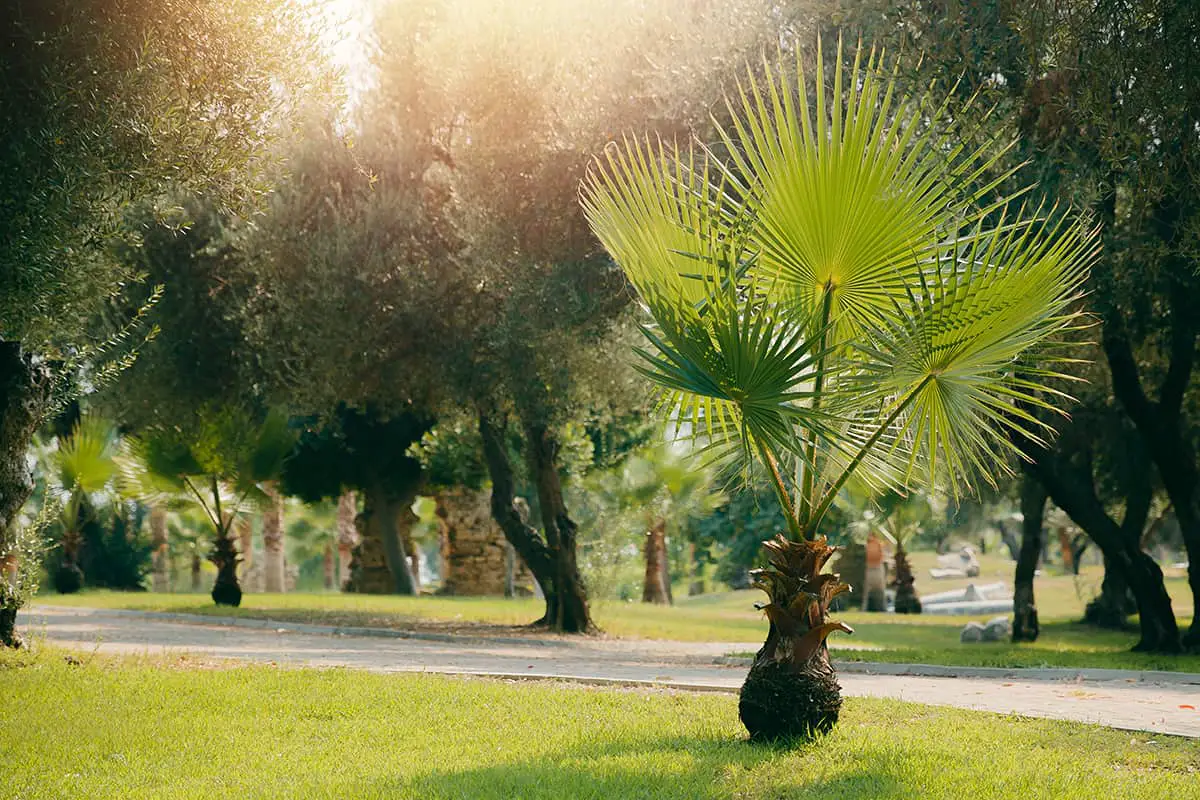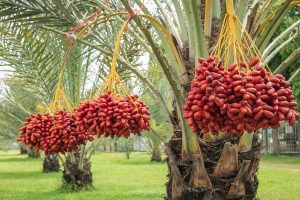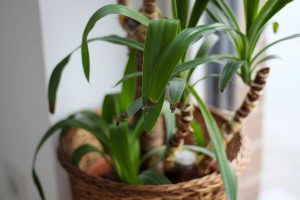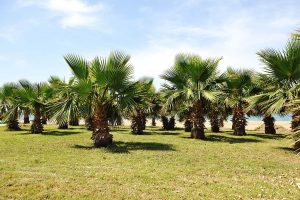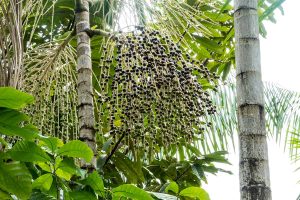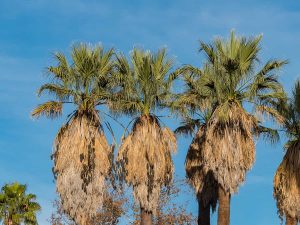When you imagine a palm tree you might initially conjure a vision of a tall palm with a long and slender trunk lining the edge of a tropical beach. Though these are the varieties we most associate with palm trees, there are actually many species that grow to considerably more modest heights.
Small types of palm trees include the Needle Palm and Cat Palm, which grow to around 6 feet in height, and the Dwarf Sugar Palm, which does not extend beyond 8 feet tall.
Here we explore the many types of small palm trees from around the world and look at the best ways to use them and care for them.
Table of Contents
Uses for Small Palm Trees
Palm trees are great for adding a tropical feel to the landscape, and the great news is that you don’t need to have masses of space or a beachside property to be able to grow your own palm tree. There are many varieties of small palms that are suitable for growing in more compact spaces.
There are even a number of palms that will thrive in containers, making them ideal for growing on the patio or a reasonably sized balcony. For those of us in cold climates, many small species of palm trees make excellent houseplants since they are accustomed to the warm environments typically found in homes.
How Tall is A Small Tree?
Trees can be categorized into sizes of small, medium, and large. Each of these categories recognizes trees according to their typical mature height. Of course, the eventual height of a tree can be heavily impacted by the environment it is grown in and the type of care it receives.
To be considered a small tree, a tree should have an expected mature height of less than 30 feet. Medium trees are those which grow to a height of between 30 feet and 70 feet, and large trees cover the broadest height range, with an eventual height of anything over 70 feet. This means a tree measuring 70 feet in height and a tree measuring 200 feet in height will both fall into the same category of large trees.
Interestingly, the spread or width of a tree isn’t taken into account when considering whether a tree is small, medium, or large. This means that even if a tree has an extensive spread of 50 feet yet measures just 25 feet tall, it will still be included as a small tree according to the standard specifications.
For this reason, it’s always a good idea to check the spread or eventual width size of a tree before you plant it. You might have chosen a small tree to grow in your compact garden, only to find that it completely takes over the width of the garden.
Smallest Type of Palm Tree
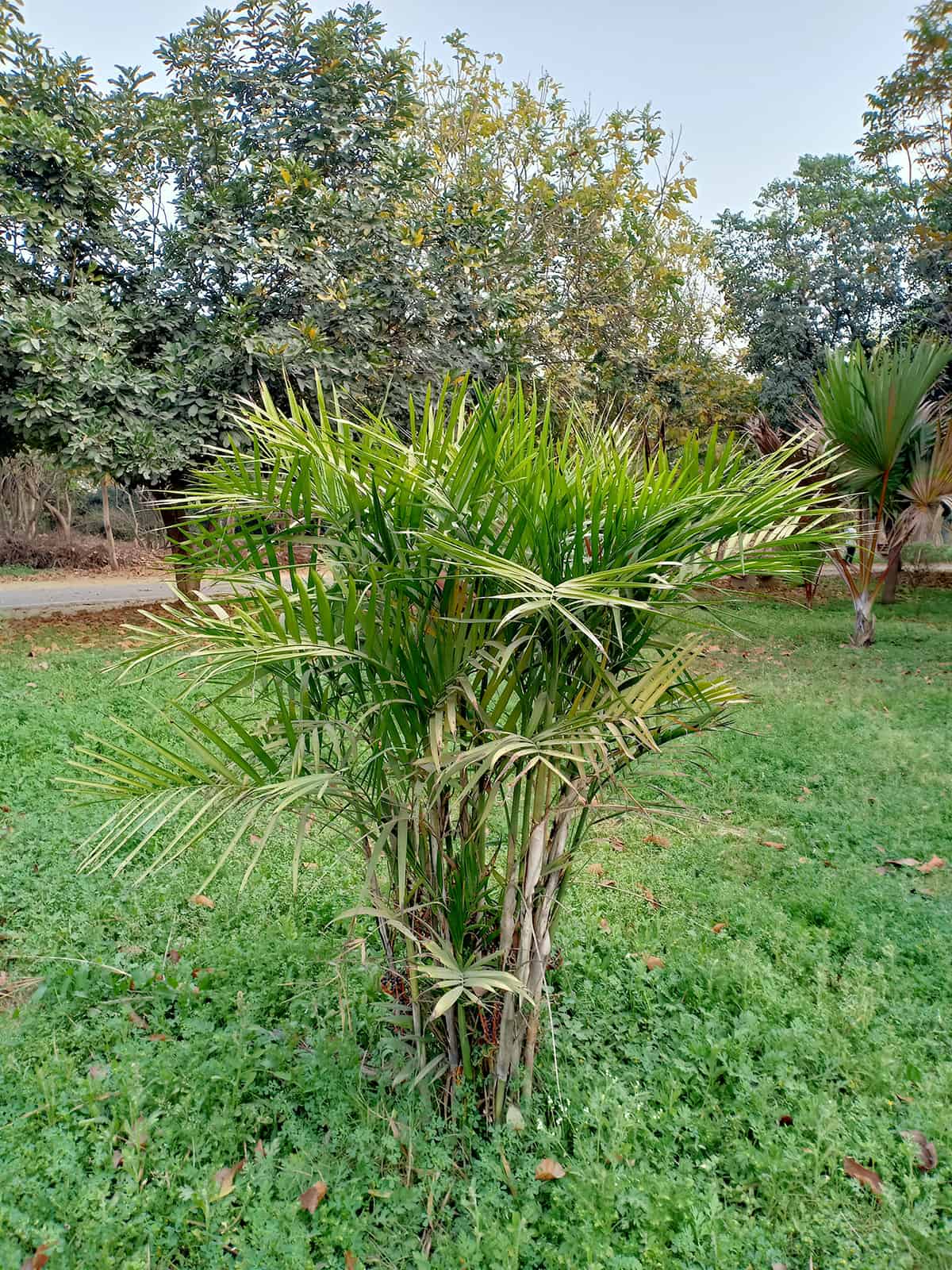
The smallest palm trees in the world include the Needle Palm (Rhapidophyllum hystrix), which grows to around 6 feet in height; the Cat Palm (Chamaedorea cataractarum), which also tops out at around 6 feet tall, and the Dwarf Sugar Palm (Arenga engleri) which grows no larger than 8 feet in height.
These small palms are ideal for adding some tropical vibes to a garden without the great heights associated with many common palm trees. If you have a compact garden and want a palm that isn’t going to take up too much space, then these small palms won’t extend very far vertically, however they all have a spread of around 8 feet, so they can take up quite a bit of width in the garden.
Small palms can also be very useful for planting beneath the dappled shade of taller trees, giving the garden some height variation and a sense of depth. The Cat Palm is very well suited to growing beneath taller trees because it is an understorey tree in its natural habitat. While it can cope with some sun, it much prefers to grow beneath the shade of other specimens.
Small Palm Trees
Current estimates show that there are around 2600 different species of palm trees in existence. Though many of these are medium to large in size, there are also an impressive amount of small palm trees which do not grow beyond 40 feet in height. This list details some of the more common small palm trees that might be suitable for growing in your home or garden.
Needle Palm
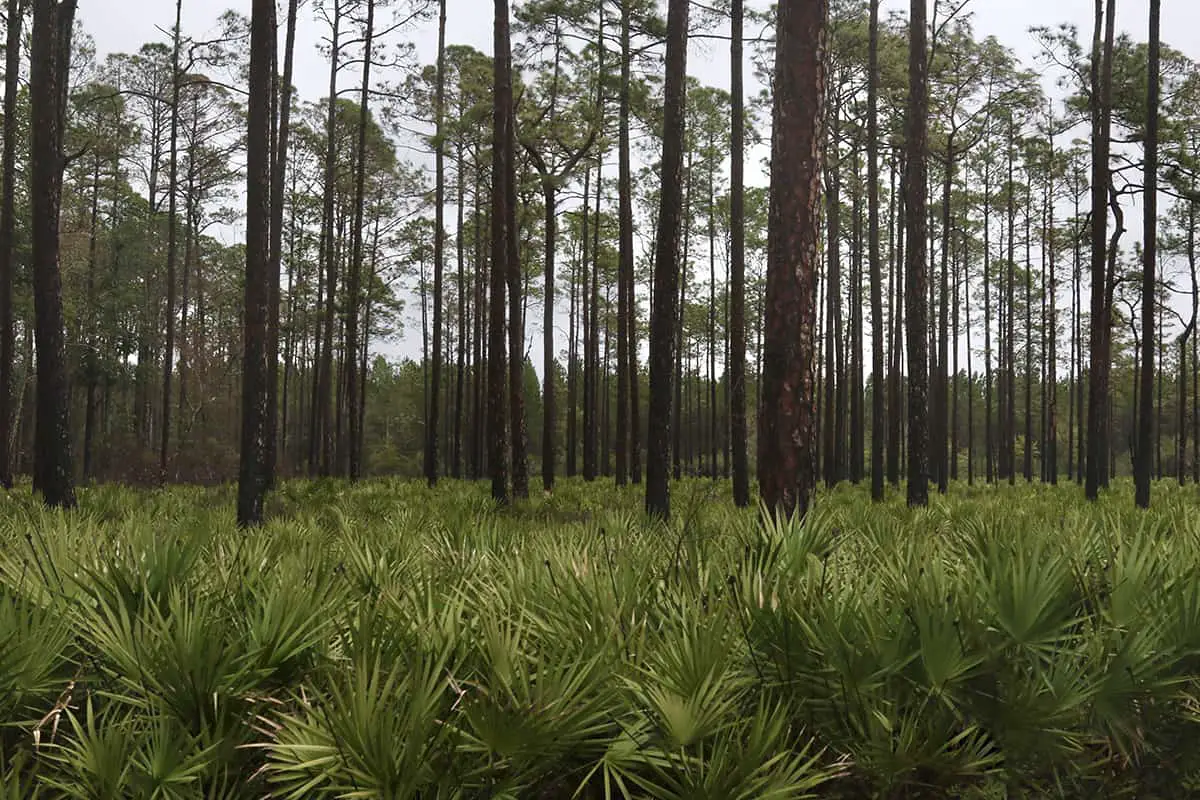
- Botanical name: Rhapidophyllum hystrix
- Common names: Needle Palm, Porcupine Palm, Blue Palmetto
- Plant family: Arecaceae
- USDA hardiness zone: 6 – 10
- Mature height: 6 feet
- Mature spread: 8 feet
This is a small palm tree that can appear to take the form of a shrub, though it has a small, chunky trunk that is usually hidden beneath the low-growing leaves. This tree is native to the Gulf Coast of the US, growing in Florida, Alabama, Georgia, South Carolina, and Mississippi. It has a dense, almost rounded growth habit, creating a lush, tropical vibe with a mass of pinnate, dark green foliage. The tree typically grows to a mature height of between 3 feet and 6 feet, though it has been known to rarely exceed 8 feet.
The Needle Palm is one of the most hardy palms, being suitable for growing down to USDA hardiness zone 6, or low temperatures of 5ºF (-15ºC). It is tolerant of drought and heavy or infertile soils, though prefers to be grown in moist and rich soils that drain easily. This palm will grow in partial shade or full sun, making it a versatile palm for a wide range of climates and areas in the garden.
Lady Palm
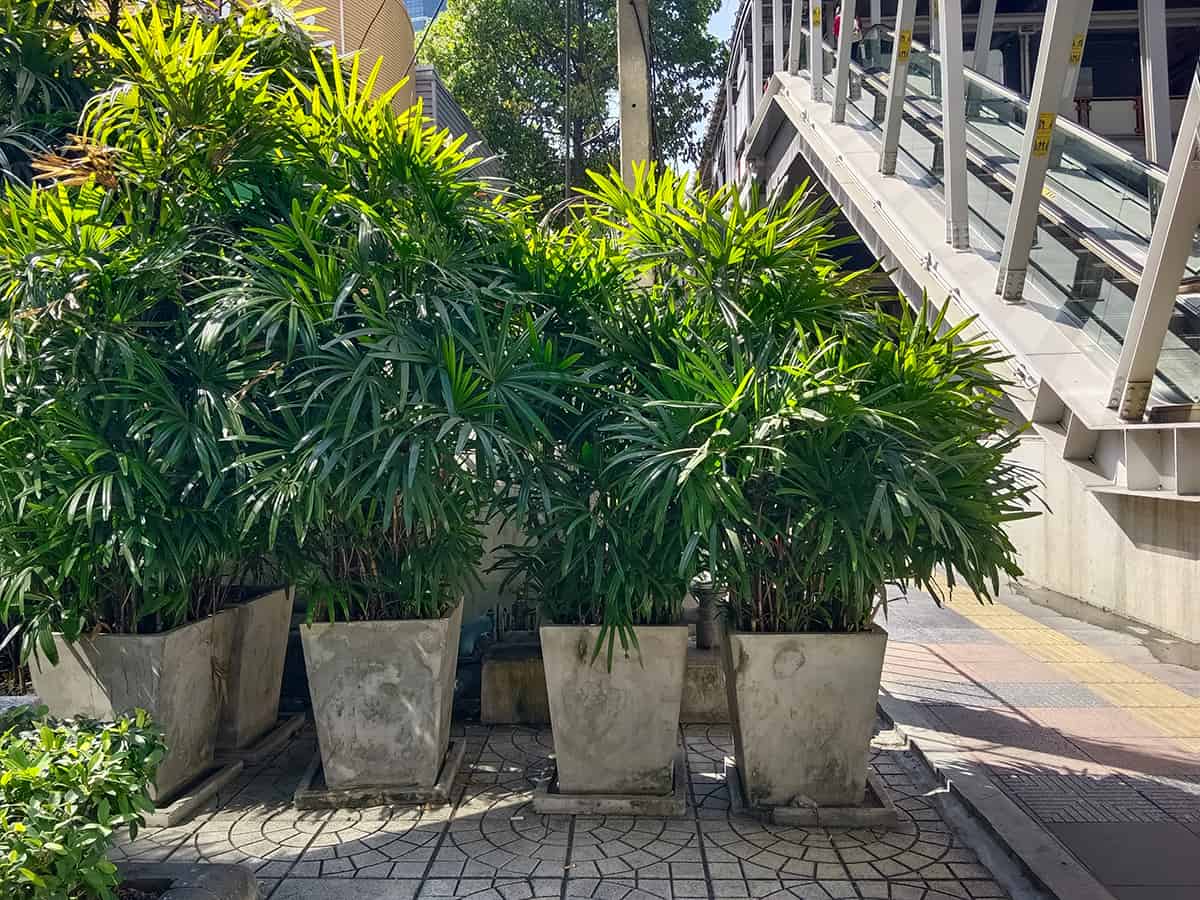
- Botanical name: Rhapis excelsa
- Common names: Lady Palm, Bamboo Palm, Broadleaf Lady Palm
- Plant family: Arecaceae
- USDA hardiness zone: 9 – 11
- Mature height: 15 feet
- Mature spread: 15 feet
This palm tree originates from Vietnam and China, where it thrives in hot and humid conditions, and is commonly grown as a houseplant around the world. It can grow to a mature height of anywhere between 6 feet and 15 feet, with a spread to match. The palmate leaves of the Lady Palm are stiff and glossy, resembling the leaves of cycads.
The Lady Palm grows best in partial shade, ideally beneath the dappled shade of taller trees. It can also survive in heavy shade though you can expect the growth to be slower and somewhat stunted in these conditions. The soil should be fertile and well draining, and it can benefit from the use of a slow-release fertilizer through the growing season.
Keep the soil lightly moist during summer, and allow it to dry out in the winter to survive only on rainfall. When kept as a houseplant, the Lady Palm should be watered only once the soil has completely dried out in the dormant phase.
Chinese Windmill Palm

- Botanical name: Trachycarpus fortunei
- Common names: Chinese Windmill Palm, Windmill Palm, Hemp Palm, Chusan Palm, Nepalese Fan Palm
- Plant family: Arecaceae
- USDA hardiness zone: 7 – 11
- Mature height: 10 feet
- Mature spread: 6 feet
The Chinese Windmill Palm is native to China, as well as other parts of Asia, including India, Japan, and Myanmar. It is a very popular specimen tree to grow due to its beauty and the ease with which it grows. It has received the Award of Garden Merit from the Royal Horticultural Society and is tolerant of a wide range of conditions. The evergreen foliage of the Chinese Windmill Palm sprouts out of the short, stout trunk, creating a lush tuft of broad, fan-shaped leaves.
Each leaf can span up to 3 feet wide, with divided leaflets in mid to dark green. The trunk of the tree is covered in coarse hair-like fibers which have been left behind by leaf sheaths, adding texture to the landscape. The mature expected height of this tree is between 8 and 10 feet, with a spread of 4 to 6 feet, making this quite a compact specimen ideal for small gardens.
The Chinese Windmill Palm should be grown in full sun to partial shade in a soil that drains well and is fertile. It is tolerant of drought, salt, and wind, and requires very little care.
Paurotis Palm
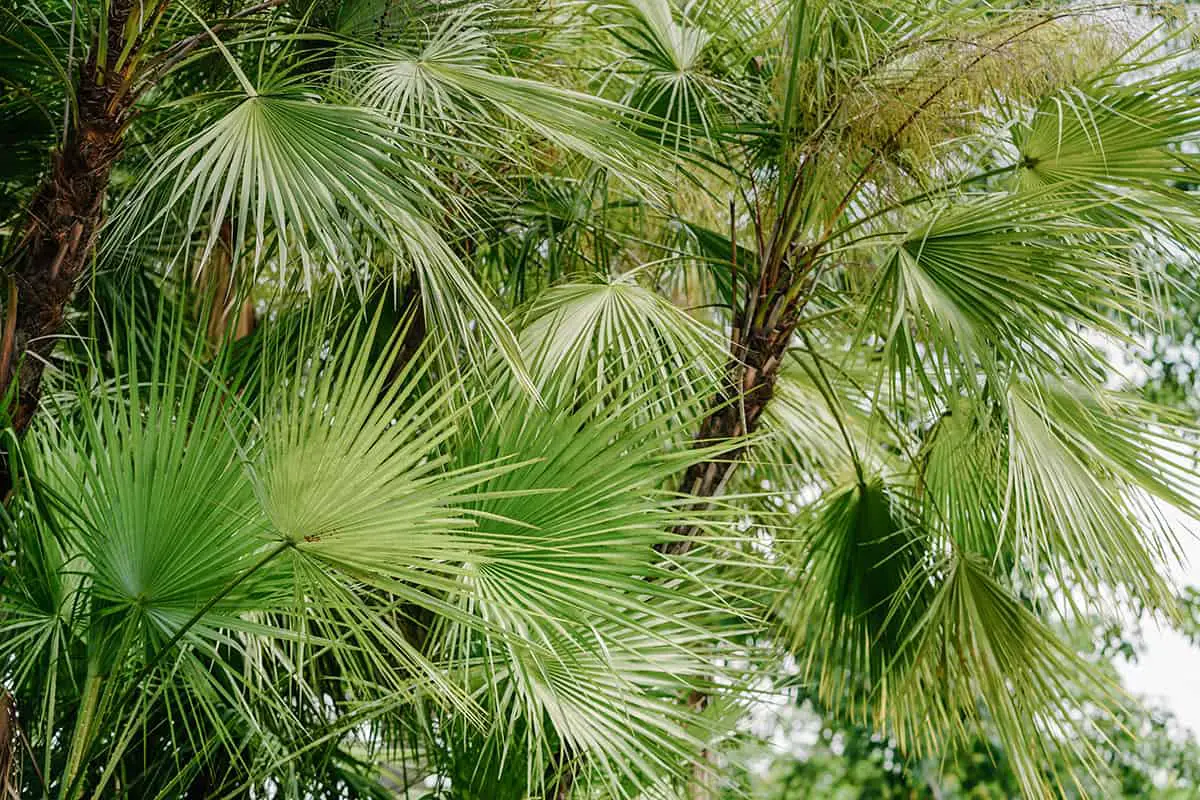
- Botanical name: Acoelorrhaphe wrightii
- Common names: Paurotis Palm, Everglades Palm, Madeira Palm
- Plant family: Arecaceae
- USDA hardiness zone: 10 – 11
- Mature height: 15 to 30 feet
- Mature spread: 25 feet
This is a multi-stemmed tree that forms clumps of lean trunks with erect, fan-shaped leaves. The leaves span around 2 feet in width and are bright green on top and silver-green beneath. Foliage will grow from the ground up, sometimes entirely covering the trunk from view, creating the illusion of a shrub. Each leaf is held on a spiky, stiff stem that can grow to up to 3 feet long.
The Paurotis Palm is native to Florida in the United States and the Caribbean, where it grows in predominantly wet conditions such as swamps. This small palm typically grows to between 15 and 30 feet in height, though it can take many years to reach this size. The spread will usually be around equal to the height of the tree.
Paurotis Palm trees thrive in wet or moist soils, making them ideal for growing alongside streams or ponds. They can also adapt to dry conditions. Grow these trees in full sun and fertilize them regularly.
Guadalupe Palm
- Botanical name: Brahea edulis
- Common names: Guadalupe Palm
- Plant family: Arecaceae
- USDA hardiness zone: 9 – 11
- Mature height: 15 to 40 feet
- Mature spread: 10 – 15 feet
This chunky palm tree is small to medium in size, growing to mature heights of anywhere from 15 to 40 feet. The fan-shaped fronds point outwards at a horizontal angle to form a dense canopy of blue-green. In summer, yellow-green flowers bloom on pendulous stems. Though they emit a pleasant fragrance, they are often hidden by the foliage of the tree. These flowers develop into clusters of black fruits which are edible. They can be eaten raw but are also commonly used in the making of jams. The Guadalupe Palm is a slow-growing tree, taking up to 20 years to reach its ultimate size.
Guadalupe Palm trees enjoy dry conditions, like those found on the island of Guadalupe off the coast of Mexico, where this tree is native. They should be grown in well-draining soil in a position that receives full sun. Once established, they will survive long periods of drought. However, they will look more lush if regularly watered through spring and summer. These trees do not do well in humid environments. They can tolerate poor soils and
European Fan Palm
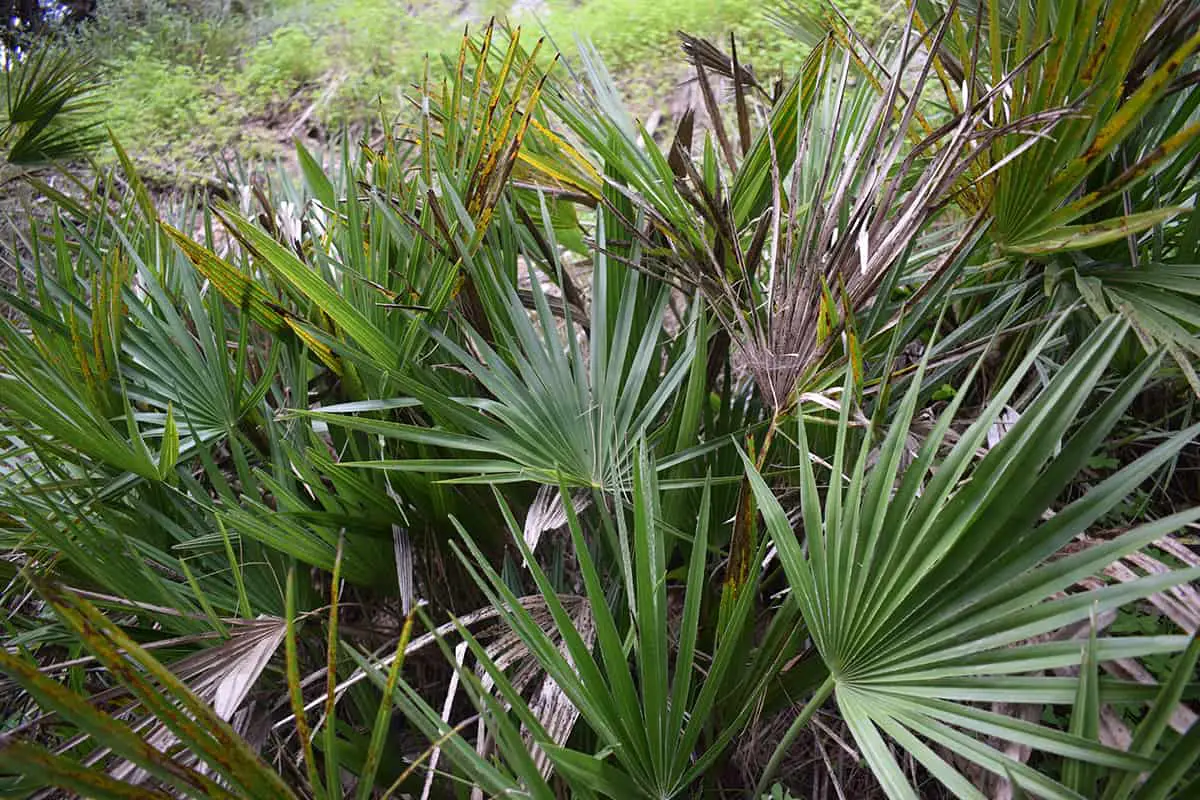
- Botanical name: Chamaerops humilis
- Common names: European Fan Palm, Dwarf Fan Palm, Mediterranean Dwarf Palm
- Plant family: Arecaceae
- USDA hardiness zone: 9 – 11
- Mature height: 15 feet
- Mature spread: 20 feet
The European Fan Palm is also known as the Dwarf Fan Palm due to its stilted size. It grows to between 6 and 15 feet in height, often being wider than it is tall. The tree is native to the Mediterranean region of Europe and is known for being quite hardy. This tree is often multi-stemmed, with as many as eight trunks, which are produced via suckers at the base. It can be grown as a single-stemmed tree if these suckers are removed as they appear.
The crown of the tree is dense, with masses of blue-green fan-shaped leaves held at the end of spiny stems measuring 3 to 4 feet in length. The fronds can span up to 2 feet wide, with each leaf segmented into between 10 and 20 leaflets. The European Fan Palm is an award-winning tree which has received the Award of Garden Merit from the Royal Horticultural Society.
European Fan Palms can adapt well to a wide range of temperatures, being hardy down to 10ºF (-12ºC). They will grow more slowly in cool conditions and may have a smaller mature size.
They can also tolerate heat well, surviving in USDA hardiness zones up to 11. These trees are tolerant of salt and wind, making them suitable for growing in coastal regions. They can adapt to dry soils once mature but will perform best in soils which are moist and well-draining, European Fan Palms prefer to be grown in full sun but will also fare well in partial shade.
Florida Silver Palm
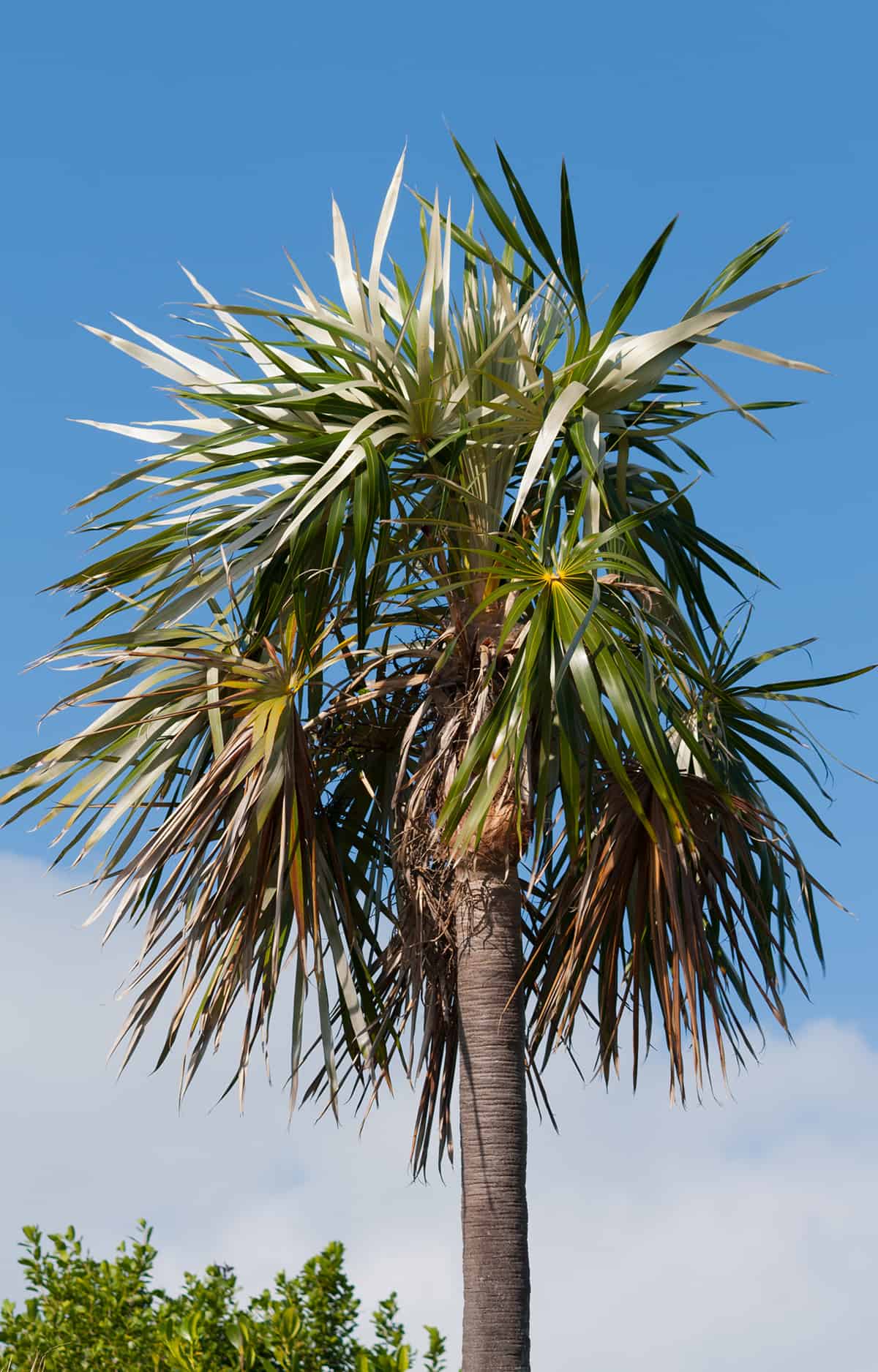
- Botanical name: Coccothrinax argentata
- Common names: Florida Silver Palm
- Plant family: Arecaceae
- USDA hardiness zone: 10 – 11
- Mature height: 5 to 20 feet
- Mature spread: 5 feet
The Florida Silver Palm is a distinctive tree native to Florida in the US, Mexico, Colombia, and the Bahamas. It has an expected height of anywhere from 5 to 20 feet, with a typical spread of between 4 and 5 feet, making it an exceptionally small palm tree when it matures at the lower end of this range. The palmate leaves of this tree measure up to 2 feet across and are blue-green on the surface with silver undersides.
The Florida Silver Palm is highly tolerant of dry soils once established but will need to be grown in moist and well-draining soil when young. It thrives in both full sun or partial shade.
Dwarf Sugar Palm

- Botanical name: Arenga engleri
- Common names: Dwarf Sugar Palm, Arenga Palm, Taiwan Sugar Palm
- Plant family: Arecaceae
- USDA hardiness zone: 9- 11
- Mature height: 8 feet
- Mature spread: 16 feet
The Dwarf Sugar Palm is native to Taiwan and the Japanese Ryukyu islands. It is usually wider than it is tall, growing to around 8 feet in height with a spread twice the size. The tree can be multi-stemmed, usually growing to produce clusters that can be used as an alternative to a hedge. Each trunk usually has a diameter of around 6 inches at maturity. It produces large fronds in a deep green color with silver undersides.
This tree performs best in partial shade to full shade, especially for the lushest leaves. However, it will also thrive in full sun and in fact, will grow significantly faster in these conditions.
Cat Palm
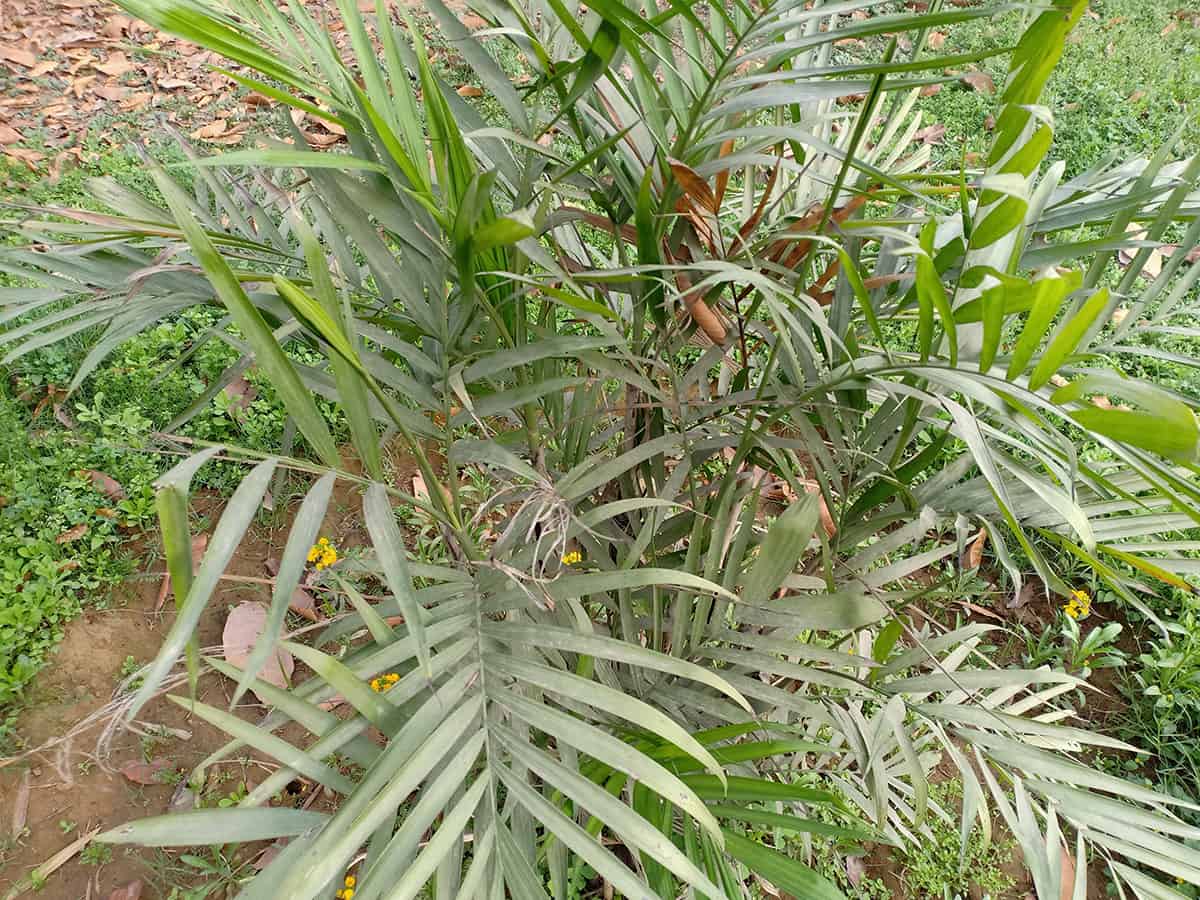
- Botanical name: Chamaedorea cataractarum
- Common names: Cat Palm, Cascade Palm, Cataract Palm
- Plant family: Arecaceae
- USDA hardiness zone: 19 – 12
- Mature height: 6 feet
- Mature spread: 8 feet
This small palm tree is native to Central America and Mexico, where it grows as an aquatic plant along the edge of streams and waterways. It produces pinnate, fresh green leaves at the end of stems that resemble bamboo canes. The tree will reach a maximum of 3 feet in height when grown as a houseplant or 6 feet when grown outside.
Cat Palms cannot tolerate drought and will need to be kept in well-draining soil with consistent moisture. They have high light needs, even when grown indoors, and should be allowed at least 6 hours of direct sun each day to thrive. In the garden, grow the Cat Palm in full sun or partial shade beneath the sparse canopy of a taller tree.
